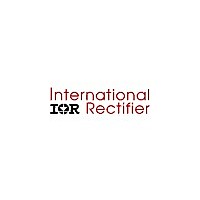IRPLCFL3 International Rectifier, IRPLCFL3 Datasheet - Page 7

IRPLCFL3
Manufacturer Part Number
IRPLCFL3
Description
KIT DESIGN CFL TRIAC DIMMING
Manufacturer
International Rectifier
Datasheet
1.IRPLCFL3.pdf
(12 pages)
Specifications of IRPLCFL3
Main Purpose
Lighting, Ballast Control
Utilized Ic / Part
IR2156
Lead Free Status / RoHS Status
Contains lead / RoHS non-compliant
Secondary Attributes
-
Embedded
-
Primary Attributes
-
Other names
*IRPLCFL3
IRPLCFL3
Component Selection
The output inductor and capacitor values should be chosen for the ballast to allow it to
run at maximum brightness around 40kHz. This will minimize losses in the inductor. For
this example the IR Ballast Design Assistant software has been used to select the
required preheat, ignition and run frequencies for a TC-DEL 26W lamp giving an L of
2.3mH and C of 6.8nF. In this circuit the two capacitors C5 and C6 add to the tank
capacitance so in practice a 4.7nF output capacitor is sufficient. The values of R16, R17
and C9 have been calculated to give a preheat frequency of 55kHz and a run frequency
of 40kHz. The ignition frequency will be around 45kHz.
Output Inductor Design
The output inductor L2 should be designed to allow a high peak ignition current without
saturating. This is important as the IR2156 shutdown will be triggered if the inductor
saturates. The ignition current depends on the type of lamp being used and must be
kept to a minimum by ensuring the preheat is correct. To minimize losses in the inductor
multi-stranded wire should be used in combination with Ferrite cores of sufficiently good
quality. The best approach to design is to wind as many turns as possible of multi-
stranded wire and have the largest gap possible to achieve the correct inductance. This
will produce the highest available peak current before saturating the inductor. It is
important to bear in mind that when the cores are hot the saturation point and hence the
peak current for the inductor will be lower therefore a poorly designed inductor may
result in the ballast shutting down during an attempted hot re-strike.
Lamp Preheating
The lamp must be sufficiently preheated before ignition. The correct preheat current can
be determined from published data or from International Rectifiers Ballast Design
Assistant software.
The preheat time can be set by adjusting the value of C10. As a general rule the lamp
filament should glow red before ignition. If preheat is insufficient the ballast is likely to
shutdown during ignition because the output inductor will be unable to operate at the
high current required. The number of turns in the auxiliary cathode windings of the
output inductor L2 should be chosen to provide sufficient preheat. In designs for ballasts
with integral lamps the shutdown pin can be grounded so that the inductor may saturate
without shutting down the circuit.
The lamp filament (Cathode) resistance over the range of dimming levels must be
between 3 and 5.5 times the resistance when cold. A simple method for determining the
hot resistance is to first connect one cathode to a DC power supply via an ammeter and
slowly increase the voltage from zero, noting the current at 1V intervals. This should be
done until the cathode can be seen to be glowing red. When this occurs the voltage
should not be increased further in order to prevent possible cathode damage. The
resistance can then be calculated for each voltage and hence the acceptable voltage
range can be found to comply with the 3 to 5.5 times cold resistance, which can be
easily measured with a DMM.
7











